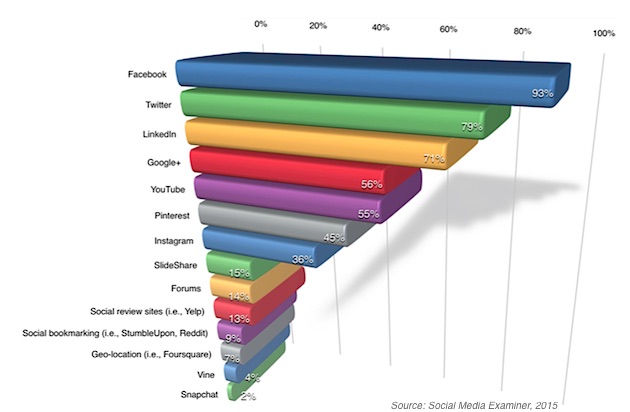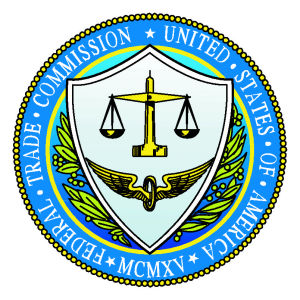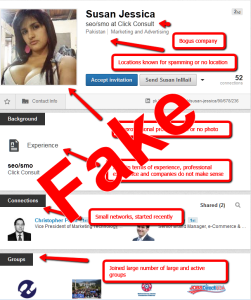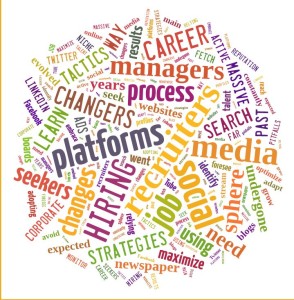Facebook or LinkedIn, which network is the most used social media network for business, the debate has been going on for years and users debating the pros and cons of both platforms usually coming to the conclusion that Facebook is most used for B2C and LinkedIn for B2B but what does the data tell us?
The 2015 Social Media Marketing Industry Report, based on data from a survey of 3,720 marketers; 61% of survey participants focus primarily on attracting consumers (B2C), and the other 39% primarily target businesses (B2B) sheds some light
Most used social media platforms
Of all platforms, it should not be surprising that Facebook is the most used social network for business overall (93% ) vs Twitter (79%) and LinkedIn (71%).
 This can be explained by the sheer number of Facebook users vs Twitter and LinkedIn. Facebook has 1.44 billion monthly active users vs LinkedIn 380 million users and Twitter 304 million (2015 with Facebook spending on average 42 minutes per day on the site vs 9.8 minutes on LinkedIn Continue reading “Facebook or LinkedIn? Most Used Social Media Network For Business”
This can be explained by the sheer number of Facebook users vs Twitter and LinkedIn. Facebook has 1.44 billion monthly active users vs LinkedIn 380 million users and Twitter 304 million (2015 with Facebook spending on average 42 minutes per day on the site vs 9.8 minutes on LinkedIn Continue reading “Facebook or LinkedIn? Most Used Social Media Network For Business”








